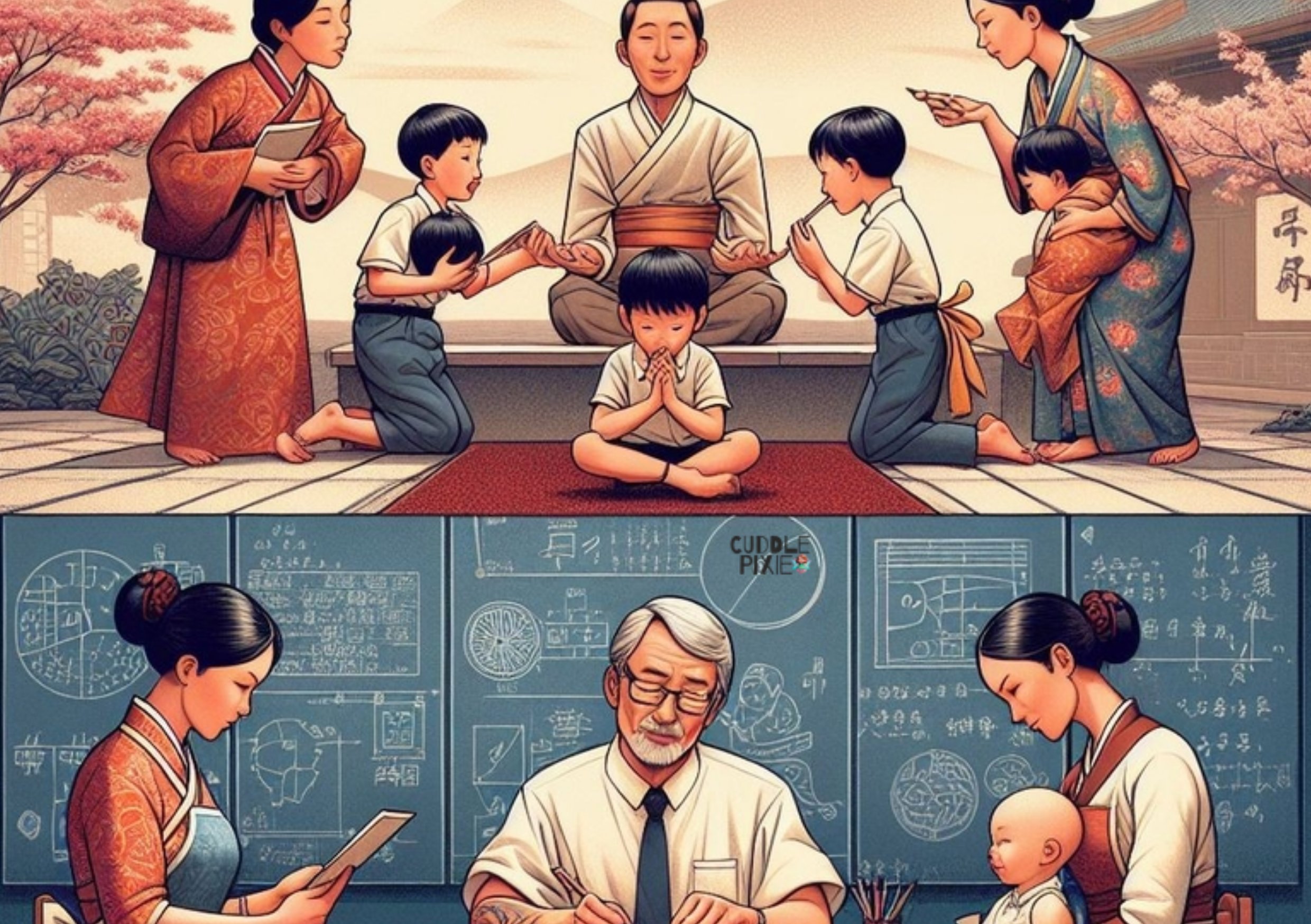Parenting, a journey marked by love, challenges, and growth, is a universal experience that transcends cultural boundaries. However, within this shared journey, distinct paths emerge, shaped by the rich tapestries of Western and Asian cultures. In this exploration, we delve deep into the contrasting philosophies and methodologies of Western and Asian parenting styles, uncovering the intricacies that shape the landscape of child-rearing.
In This Article
Cultural Context and Values
At the heart of parenting lies a tapestry woven with cultural values and traditions, influencing every facet of the journey. In Western societies, individualism reigns supreme, championing the ideals of self-expression and autonomy. Here, children are encouraged to spread their wings, exploring the vast expanse of their identities with freedom and curiosity. Mysa York, a seasoned parenting blogger and advocate for Western parenting, emphasizes the importance of fostering individuality:
In Western culture, we celebrate the uniqueness of each child, nurturing their self-expression and autonomy.
Conversely, in the embrace of Asian cultures, collectivism forms the cornerstone of parenting philosophies. Within the tapestry of kinship and community, familial harmony takes precedence over individual desires. Dr. Hiroshi Tanaka, a renowned psychologist and proponent of Asian parenting, reflects on the value of collectivism:
In Asian cultures, the family unit is the cornerstone of society. Children are taught to prioritize the collective good over individual desires.
Discipline and Authority
Discipline serves as the guiding hand that shapes the contours of childhood, imparting values and instilling boundaries. In Western households, the brush of authority is wielded with a delicate balance of firmness and empathy. Dr. Emily Johnson, a child psychologist, emphasizes the importance of authoritative parenting:
In Western cultures, we strive to strike a balance between setting boundaries and nurturing emotional intelligence.
In contrast, the strokes of discipline in Asian households are imbued with reverence for tradition and hierarchy. Tanaka observes, Asian parents often adopt an authoritarian approach, emphasizing obedience and respect for authority figures. However, he cautions against misconceptions, noting that
Authoritarian does not equate to harshness. It is rooted in a deep respect for tradition and familial values.
Education and Academic Pressure
The corridors of academia serve as battlegrounds where Western and Asian parenting styles clash, each wielding its arsenal of values and expectations. In Western societies, the pursuit of knowledge is revered, yet the pressure to excel is tempered by a reverence for holistic development. York muses,
In Western cultures, we strive to cultivate a love for learning while prioritizing our children’s mental health and well-being.
Conversely, the halls of Asian classrooms reverberate with the echoes of academic rigor. Tanaka elucidates,
Asian parents place a premium on academic achievement, viewing education as the gateway to success.
Yet, he acknowledges the pitfalls of excessive pressure, cautioning against the perils of “tiger parenting” and its toll on children’s mental health.
Communication and Emotional Expression
The canvas of emotional expression is painted with contrasting strokes in Western and Asian households. In Western cultures, the palette is splashed with vibrant hues of openness and directness. Johnson affirms,
In Western cultures, we prioritize open communication, encouraging children to express their thoughts and feelings freely.
Conversely, in Asian families, the strokes of communication are imbued with subtlety and nuance. Tanaka explains,
Asian parents often employ indirect communication, relying on nonverbal cues and implicit messages to convey emotions.
However, he underscores the importance of familial bonds, noting that even in silence, love speaks volumes.
Independence and Interdependence
The dichotomy of independence and interdependence weaves a complex narrative in Western and Asian parenting. In Western cultures, the brush of individuality paints a portrait of self-reliance and autonomy. York reflects,
Western parents celebrate their children’s independence, fostering a sense of self-confidence and resilience.
Conversely, in Asian cultures, the threads of interdependence bind families in a tapestry of kinship and solidarity. Tanaka observes,
Asian children learn the value of cooperation and harmony within the family unit, cultivating strong bonds that endure a lifetime.
Yet, he emphasizes the importance of striking a balance, noting that
interdependence should not stifle individuality but rather enrich it.
Final words
As we step back to admire the canvas of parenting, we are greeted by a kaleidoscope of colors, each reflecting the richness of human diversity. Western and Asian parenting styles stand as testament to the multifaceted nature of child-rearing, each offering its own blend of strengths and challenges. As we navigate the labyrinth of parenthood, let us draw inspiration from the mosaic of cultural wisdom that surrounds us, weaving a tapestry of love, understanding, and growth for the generations to come.
